
Journal of Slavic Linguistics
Scope & Guideline
Exploring the Depths of Slavic Linguistics
Introduction
Aims and Scopes
- Morphological and Syntactic Analysis:
The journal consistently publishes studies that delve into the morphological structures and syntactic frameworks of Slavic languages, analyzing phenomena such as allomorphy, verb-prefix orders, and nominal functional categories. - Cross-Linguistic Comparisons:
There is a strong emphasis on comparative studies across Slavic languages as well as between Slavic and non-Slavic languages, facilitating a broader understanding of linguistic universals and specificities. - Language Evolution and Historical Linguistics:
Research investigating the diachronic aspects of Slavic languages, including the evolution of grammatical structures and the historical development of language features, is a core focus. - Interface Phenomena:
The journal often explores the interfaces between syntax, semantics, and phonology, examining how these domains interact within Slavic languages. - Language Contact and Sociolinguistics:
Contributions that address sociolinguistic aspects, including language loyalty, nationalism, and language contact situations, reflect the journal's commitment to understanding the social dimensions of Slavic languages.
Trending and Emerging
- Experimental and Corpus-Based Studies:
There is a significant increase in research utilizing experimental methods and corpus analyses, reflecting a trend towards empirical validation of linguistic theories and phenomena. - Theoretical Approaches to Syntax and Semantics:
Recent publications show a strong inclination towards advanced theoretical frameworks in syntax and semantics, including discussions around control, binding, and the structure of complex sentences. - Morphosyntactic Variation and Change:
Emerging themes include the analysis of morphosyntactic variation and change, particularly in the context of language contact and bilingualism, which are gaining traction in the field. - Prosodic and Phonological Studies:
An uptick in research focusing on prosody and phonology, particularly in relation to Slavic languages' vowel systems and stress patterns, indicates a growing interest in the phonetic aspects of language. - Language and Emotion:
Explorations of how language encodes psychological states and emotions are increasingly prominent, reflecting a broader interdisciplinary engagement with cognitive science and linguistics.
Declining or Waning
- Descriptive Grammar Studies:
There seems to be a reduction in purely descriptive grammatical studies focusing on individual Slavic languages, with a shift towards more theoretical and comparative analyses. - Traditional Dialectology:
Research centered on traditional dialectological aspects is less frequently represented, possibly indicating a shift towards more modern linguistic approaches and methodologies. - Sociolinguistic Case Studies:
Although sociolinguistics remains a theme, specific case studies focusing on localized language use and variation appear to be less common, suggesting a move towards broader or theoretical discussions.
Similar Journals
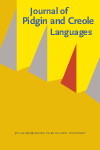
JOURNAL OF PIDGIN AND CREOLE LANGUAGES
Exploring the Rich Tapestry of Language EvolutionJOURNAL OF PIDGIN AND CREOLE LANGUAGES, published by John Benjamins Publishing Co, is a leading international journal dedicated to the study of pidgin and creole languages, offering a unique platform for interdisciplinary research within the fields of linguistics and language studies. With an impressive impact factor reflected in its 2023 Scopus rankings—placing it in the Q2 category for both Linguistics and Language—this journal has established itself as an essential resource for academics and practitioners alike. Covering a broad temporal scope from 1986 to 2024, it promotes innovative research that advances the understanding of language evolution, socio-linguistics, and cultural dynamics. The journal’s focus on both theoretical and practical perspectives makes it particularly valuable for researchers, professionals, and students interested in the complexities of language and identity. Although it does not currently offer Open Access, its commitment to quality scholarship ensures that each issue presents cutting-edge research and critical insights into the world of pidgins and creoles.

Suvremena Lingvistika
Empowering Language Research Through Open Access.Suvremena Lingvistika is a distinguished open-access journal published by the Croatian Philological Society, dedicated to advancing research in the field of linguistics and language. Since its establishment, the journal has been pivotal in promoting scholarly dialogue within the linguistics community, especially among researchers and academics in Croatia and beyond. With an ISSN of 0586-0296 and an E-ISSN of 1847-117X, the journal has transitioned to an open-access model since 2007, ensuring that research is freely accessible to all. As of 2023, it holds a respectable Q3 ranking in the Linguistics and Language category, reflecting its potential contribution to the field. The journal's scope encompasses a wide array of linguistic disciplines, encouraging both theoretical and empirical studies. Supportive of new research, Suvremena Lingvistika aims to foster innovative approaches and methodologies in linguistics, making it an essential resource for students, researchers, and professionals eager to explore the complexities of language. With its ongoing publication until 2024, it continues to shape the linguistic landscape, providing valuable insights and fostering collaboration among scholars globally.

Brills Annual of Afroasiatic Languages and Linguistics
Illuminating the Diversity of Afroasiatic LanguagesBrill's Annual of Afroasiatic Languages and Linguistics stands as a vital publication in the field of linguistics, specifically focusing on the rich and diverse Afroasiatic language family. Published by the esteemed BRILL, this journal has garnered a reputation for rigorous scholarship since its inception in 2009, converging into its current publication cycle through to 2024. With an ISSN of 1876-6633 and an E-ISSN of 1877-6930, it enjoys a commendable Category Quartile ranking of Q2 in Linguistics and Language for 2023 and respectable Scopus rankings in both Arts and Humanities and Social Sciences. This journal aims to provide a platform for researchers, educators, and students alike, facilitating the dissemination of innovative research, critical analyses, and theoretical advancements within the Afroasiatic linguistic domain. Given its substantial engagement with contemporary linguistics, this annual publication is invaluable for those aiming to deepen their understanding of languages and dialects across the Afroasiatic spectrum.

Language and Linguistics
Elevating Academic Discourse in Language StudiesLanguage and Linguistics is a leading academic journal published by ACAD SINICA, INST LINGUISTICS, based in Taiwan. Established in 2008, this journal has rapidly gained recognition within the field of linguistics, achieving a commendable ranking of Q2 in the 2023 category quartiles and holding positions in the top percentiles of Scopus rankings for both Arts and Humanities and Social Sciences. With an ISSN of 1606-822X and an E-ISSN of 2309-5067, the journal aims to foster the development of linguistics research by providing a platform for the dissemination of innovative and interdisciplinary studies. While it currently operates on a traditional subscription model, its significant contribution to the advancement of linguistic theory and its applications makes it an invaluable resource for researchers, professionals, and students alike. Spanning converged years from 2008 to 2024, Language and Linguistics continues to shape the dialogue in understanding language phenomena and encourages submissions that push the boundaries of current linguistic knowledge.
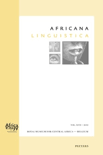
Africana Linguistica
Unveiling the Diversity of African DialectsAfricana Linguistica is a premier journal dedicated to the exploration and analysis of linguistic studies concerning African languages and their dialects. Published by PEETERS, a highly regarded academic publisher, this journal aims to promote scholarly discourse and research on the diverse linguistic landscapes of Africa. With its emphasis on both theoretical and applied linguistics, Africana Linguistica serves as a vital resource for researchers, professionals, and students alike, facilitating the dissemination of groundbreaking research and fostering greater understanding of African linguistic heritage.
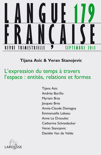
LANGUE FRANCAISE
Elevating Scholarly Dialogue on LinguisticsLANGUE FRANCAISE, published by LAROUSSE, stands as a premier journal in the realm of linguistics and language studies, boasting an impressive Q1 quartile rating in the 2023 Linguistics and Language category. With its international reputation anchored in France, this journal presents critical research and discussions that advance our understanding of the French language, its structures, usage, and evolution. Although not an open-access publication, LANGUE FRANCAISE is indexed with an ISSN of 0023-8368 and an E-ISSN of 1957-7982, reflecting its scholarly credibility and impact, including Scopus rankings that place it competitively in the fields of arts and humanities as well as social sciences. This journal serves as an essential resource for researchers, practitioners, and students aiming to deepen their knowledge and engage in scholarly debates that shape contemporary linguistic thought. The journal's commitment to high-quality research continues to foster an enriching academic environment and contribute to the dynamic discourse surrounding language and linguistics.
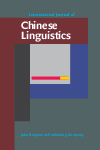
International Journal of Chinese Linguistics
Pioneering Studies in Chinese LinguisticsInternational Journal of Chinese Linguistics is a distinguished publication that delves into various aspects of linguistic studies pertaining to the Chinese language. Published by John Benjamins Publishing Co, this journal stands out for its commitment to advancing the knowledge and understanding of Chinese linguistics within the global academic community. With an impact factor that places it in the Q2 quartile of linguistics and language, the journal is indexed in prominent databases, achieving ranks of #501 in Arts and Humanities and #580 in Social Sciences. These rankings reflect the journal's dedication to maintaining high scholarly standards and its relevance in both linguistic research and practical applications. While not categorized as Open Access, the journal provides necessary access through institutional subscriptions, thereby ensuring that valuable research reaches a broad audience. Covering a wide range of topics from syntax and phonetics to sociolinguistics and applied linguistics, the International Journal of Chinese Linguistics serves as an essential resource for researchers, professionals, and students seeking to deepen their understanding of the intricate relationship between language and culture in the Chinese context. With converging years from 2019 to 2024, it continues to evolve, reflecting ongoing developments in the field.

LINGUISTIQUE
Bridging Gaps in Linguistic UnderstandingLINGUISTIQUE, an esteemed journal published by PRESSES UNIV FRANCE, serves as a vital platform for scholarly discourse in the fields of linguistics and language studies. With its ISSN 0075-966X and E-ISSN 2101-0234, this French journal has been a significant contributor to the understanding of linguistic phenomena since its inception in 2004, and it continues its journey through to 2024. Although currently categorized in the Q4 quartile for both Arts and Humanities (miscellaneous) and Linguistics and Language, its commitment to publishing quality research encourages a diverse range of articles, reviews, and innovative studies. Positioned in the 32nd and 29th percentiles for its respective fields according to Scopus rankings, LINGUISTIQUE is dedicated to advancing knowledge and stimulating engagement among researchers, professionals, and students alike. While it does not offer open access, the journal remains an essential resource for those who seek to deepen their understanding of linguistic principles in a global context, facilitating a richer discourse that connects theory with practice.

Studia z Filologii Polskiej i Slowianskiej
Connecting Cultures Through Language and LinguisticsStudia z Filologii Polskiej i Slowianskiej is a prominent journal published by the Polish Academy of Sciences, Institute of Slavic Studies, focusing on the rich and diverse field of linguistics and language studies, particularly within the Slavic context. With the ISSN 0081-7090 and E-ISSN 2392-2435, this open-access journal has been a valuable resource for researchers, professionals, and students since its transition to an open-access model in 2014. It features rigorous peer-reviewed articles that contribute to the understanding of linguistic phenomena and cultural narratives across Slavic languages. Recognized within the Q3 quartile of linguistics and language in 2023, it ranks at the intersection of arts, humanities, and social sciences, providing insights that echo through disciplines such as sociolinguistics, psycholinguistics, and philology. In its ongoing publication trajectory from 2011 to 2023, Studia z Filologii Polskiej i Slowianskiej continues to foster academic discourse and collaboration, positioning itself as a key player in the global linguistic community.
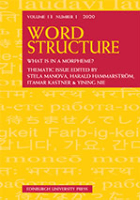
Word Structure
Shaping the Future of Language StudiesWord Structure is a premier journal published by Edinburgh University Press, specializing in the dynamic field of linguistics and language studies. Since its inception in 2008, this journal has carved a niche within the academic community, achieving an impressive Q1 ranking in the Linguistics and Language category for 2023, further affirming its reputation as a leading platform for innovative research. With its robust rankings in both the arts and humanities and social sciences spheres, positioned in the top percentiles, Word Structure serves as an essential resource for linguists, researchers, and students interested in the intricate mechanisms of word formation and morphology. Although it does not offer open access, the journal is dedicated to advancing the understanding of linguistic theory and empirical findings, making significant contributions to ongoing discussions in the field. By facilitating scholarly dialogue and promoting high-quality research, Word Structure plays a crucial role in shaping contemporary linguistics and enhancing the academic discourse surrounding language structures.